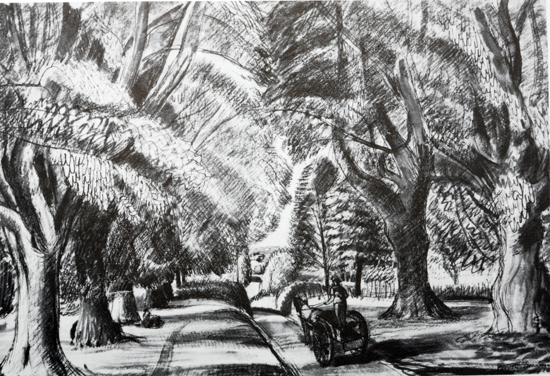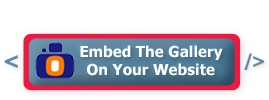Freedman was born 1901 in the East End of London, the eldest son of Russian Jewish immigrants. His childhood was marred by ill health. He spent four years between the ages of 9 and 13 in hospital, where he taught himself to draw. At 15, his talent for drawing led to jobs as a draughtsman to stonemasons, architects and sign writers. At the same time, for five years, he also went to evening classes at the St Martin’s School of Art. In 1922, he got a scholarship to the Royal College of Art, where he later taught, became an examining visitor and was elected as an Honorary Fellow.
Freedman became a successful and prolific book illustrator and book jacket designer. His illustrations include work for Faber and Faber, such as Siegfried Sassoon's Memoirs of an Infantry Officer (1931), The Folio Society, and the Baynard and Curwen Presses. Using pen and chalk for reproduction by line blocks for black and white and auto-lithography for colour, Freedman developed an immediately recognisable style. He also became a distinguished letterer and typographer.
In the 1930s Freedman worked for London Transport, designing posters, as well as designing publicity for Shell, the BBC and the General Post Office and Ealing Films. In 1935 he designed the George V Silver Jubilee postage stamp. An official war artist, from 1941, first with the British Expeditionary Force in France, then with the Admiralty until 1946, Freedman won the CBE in 1947 for his work. This included large-scale paintings, portraits of entire ships' crews and a lithograph of the 15-inch Gun Turret in HMS Repulse. After the war, he became a TV and radio personality. He was made a Royal Designer for Industry in 1949. Freedman died in 1958
Added:
16th Feb 2011
Subjects:
Art and Design, Citizenship, Design and Technology, Geography, History, PSHE, Religious Education
Key Stages:
Foundation, Key Stage 1, Key Stage 2, Key Stage 3
Keywords:
Art, teaching packs, history, immigration, Judaism, Jewish, contemporary, London, international, sculpture, photography, painting, education, primary, secondary, drawing
Related Links:
EXIF data:| FILE |
| FileName | freedman_country_lane.jpg |
| FileDateTime | 0 |
| FileSize | 256117 |
| FileType | 2 |
| MimeType | image/jpeg |
| SectionsFound | ANY_TAG, IFD0, THUMBNAIL, EXIF, INTEROP |
| COMPUTED |
| html | width="550" height="376" |
| Height | 376 |
| Width | 550 |
| IsColor | 1 |
| ByteOrderMotorola | 0 |
| CCDWidth | 4mm |
| ApertureFNumber | f/29.0 |
| Copyright | photo©neil thomson |
| Thumbnail.FileType | 2 |
| Thumbnail.MimeType | image/jpeg |
| IFD0 |
| Make | Canon |
| Model | Canon EOS 5D |
| Orientation | 1 |
| XResolution | 3500000/10000 |
| YResolution | 3500000/10000 |
| ResolutionUnit | 2 |
| Software | Adobe Photoshop CS3 Macintosh |
| DateTime | 2008:09:17 10:37:11 |
| WhitePoint | Array
(
[0] => 313/1000
[1] => 329/1000
)
|
| PrimaryChromaticities | Array
(
[0] => 64/100
[1] => 33/100
[2] => 21/100
[3] => 71/100
[4] => 15/100
[5] => 6/100
)
|
| YCbCrCoefficients | Array
(
[0] => 299/1000
[1] => 587/1000
[2] => 114/1000
)
|
| YCbCrPositioning | 2 |
| Copyright | photo©neil thomson |
| Exif_IFD_Pointer | 376 |
| THUMBNAIL |
| Compression | 6 |
| XResolution | 72/1 |
| YResolution | 72/1 |
| ResolutionUnit | 2 |
| JPEGInterchangeFormat | 946 |
| JPEGInterchangeFormatLength | 10473 |
| EXIF |
| ExposureTime | 1/125 |
| FNumber | 29/1 |
| ExposureProgram | 1 |
| ISOSpeedRatings | 160 |
| ExifVersion | 0221 |
| DateTimeOriginal | 2008:09:17 09:19:45 |
| DateTimeDigitized | 2008:09:17 09:19:45 |
| ComponentsConfiguration | ���� |
| ShutterSpeedValue | 458752/65536 |
| ApertureValue | 630784/65536 |
| ExposureBiasValue | 0/1 |
| MeteringMode | 5 |
| Flash | 16 |
| FocalLength | 100/1 |
| FlashPixVersion | 0100 |
| ColorSpace | 65535 |
| ExifImageWidth | 550 |
| ExifImageLength | 376 |
| InteroperabilityOffset | 820 |
| FocalPlaneXResolution | 4368000/1415 |
| FocalPlaneYResolution | 2912000/942 |
| FocalPlaneResolutionUnit | 2 |
| CustomRendered | 0 |
| ExposureMode | 1 |
| WhiteBalance | 0 |
| SceneCaptureType | 0 |
| UndefinedTag:0xA500 | 22/10 |
| INTEROP |
| InterOperabilityIndex | R03 |
| InterOperabilityVersion | 0100 |

 Freedman, Barnett: Country Lane, 1926
Freedman, Barnett: Country Lane, 1926

 [ 1 ]
[ 1 ]  [
[
